VH-10-->VH-1-->IH-1

The original Soviet code of this plane was ' white 11'.
Although, it is unlikely that what we see on this photo was its original painting. The fuselage looks partially repainted with matt Finnish green, as the markings on the upper wing surfaces. The tail, and part of the surfaces, looks still painted with the Soviet glossy AII green; the light tail could be an illusion due to reflection of the low sun on the glossy paint.
The red star, of unusual size and position, shows a strange white part; it could be a paper marking, put on for photographic purposes after having deleted the original red stars and possibly the Finnish markings painted to replace them. This is only speculative.
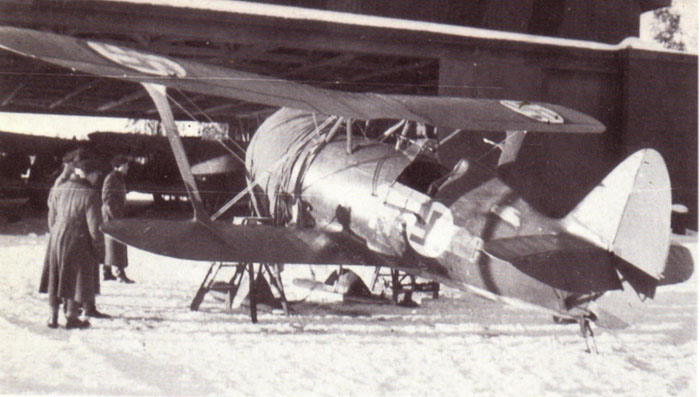
It's hard to understand the chronology between this photo and the one above vith Soviet markings.
It could be that this photo was taken before the one with supposedly fake Soviet markings.
It is likely that this bad painting was provisional, and the plane in service wore a much more accurate livery, as VH-11.
In Finnish service, this plane was at first coded VH-10, and delivered to LeLv29 on February 23, 1940.
On 20 March 1940, skis went through snow during landing in Parola, and the aircraft turned upside down injurying the pilot H.Sundberg.
On the drawing below, the plane was represented in the same painting of the photo aside.
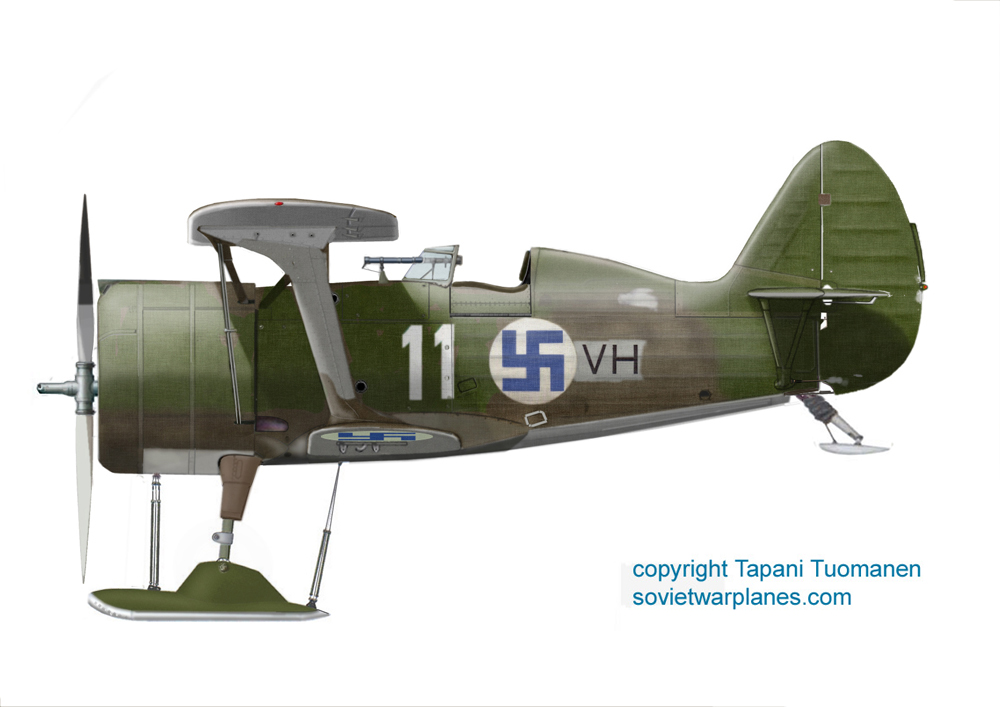
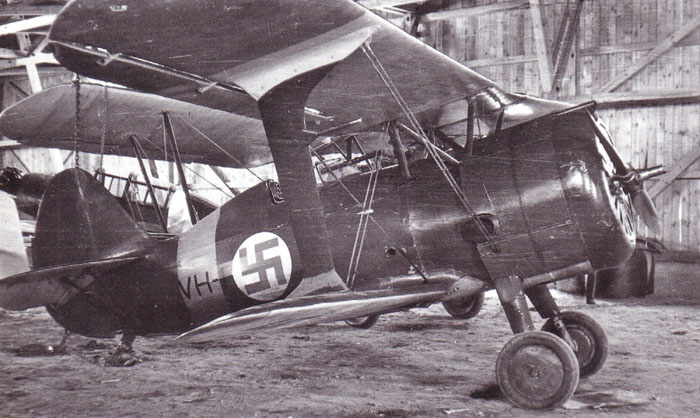
The plane was delivered to LeLv34 on March 13, 1941 as VH-1.
It was delivered to 2/TLeLv 35 on September 8, 1941.
It was recoded as IH-1 on June 24, 1942.
It was stored on September 11, 1942, after 109 hours of flight with Ilmavoimat.
On this photo, the plane features an olive green livery on uppersurfaces and light grey on the undersurfaces; it features orange-yellow bands under the wingtips and around the fuselage; this suggests that the photo was taken after June 1941.
The color of the front of the cowling is glossy and darker; the reason
is unclear, perhaps it was repainted after a repair.
VH-11-->VH-2-->IH-2
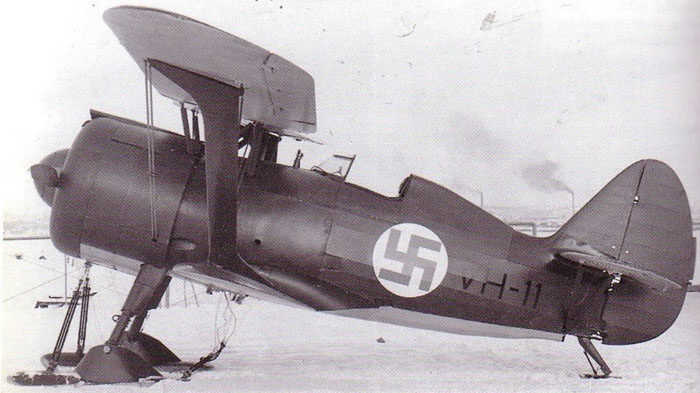
VH-11 was the mark that Finnish AF gave to 'Yellow 173' of 145 IAP, captured after a landing on Oulunjarvi lake on 24 December 1939.
The plane was fully repainted with Finnish field green (FS 34096) with light grey undersurfaces. Note the green landing gear struts, skis and tail skid.
It was assigned to LeLv 29 on February 26, 1940. It had a bad landing at Parola on march 19, 1940.
It was assigned to LeLv 34 on September 19, 1940.
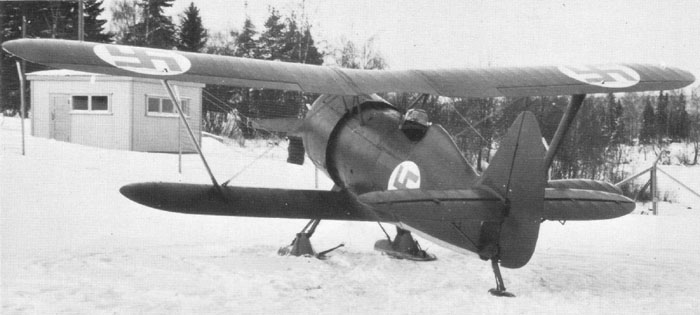
This photo of VH-11 shows that the early Finnish insignas on the upper wing were larger than those that became standard in 1942.
They are also larger than the marks originally painted on VH-10.
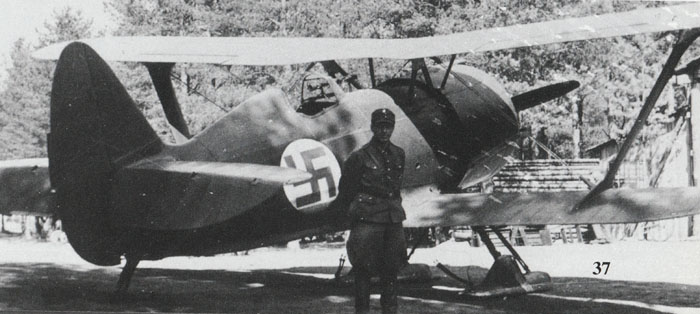
The photo is probably of the winter/spring 1941; the ground is still covered by snow, but it doesn't look too cold.
The lack of yellow bands shows that the photo was taken before the Continuation war.
The dotting is dueto the shadow of some tree.
(from Squadron Signal- Polikarpov fighters in action part 1 )
Below: profile of VH-11 in winter 1940/41.
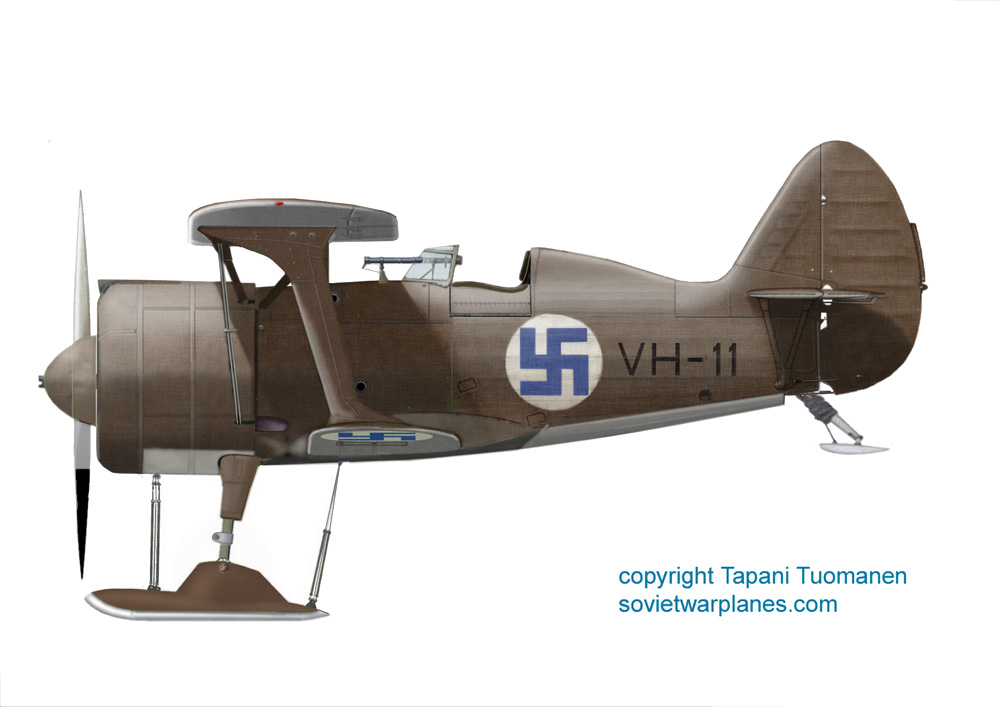
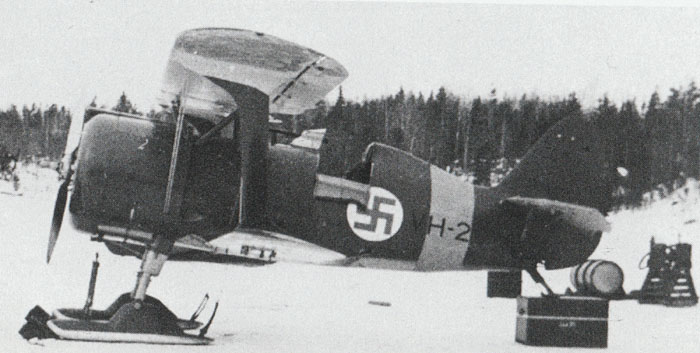
In late 1940, the plane was re-coded as VH-2.
It received yellow bands at the beginning of the Continuation War in June 1941.
It was assigned to 2/TLeLv 35 on October 17, 1941.
Some time after, the plane had an accident in Vesivehmaa.
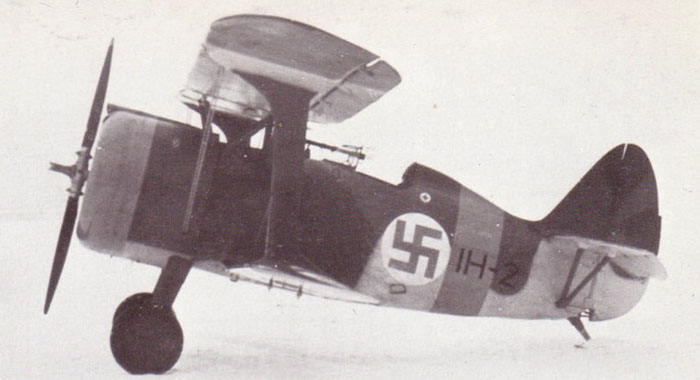
On July 15, 1943 it was delivered to LeLv34 after repairs as IH-2.
The plane was repainted with the Finnish camouflage, black and olive green, with light blue undersurfaces and orange-yellow bands on the fuselage, nose and lower face of wingtips. The Finnish marks on the upper wings were made smaller.
It crashed when landing at Kymi on August 2, 1943.
The photo was taken presumably in winter 1943/44.
It was stored on February 20, 1945, after 114 hours of flying time.
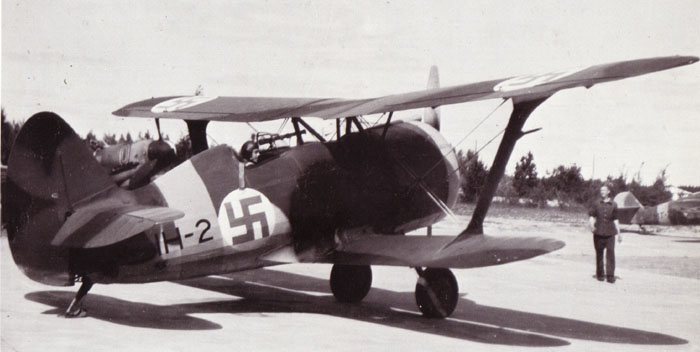
This image of IH-2 shows well the camouflage nd the national marks over the wimgs of IH-2.
The extension of tyhe yellow band on the nose was smaller than the photo above; we are not sure about their chronology.
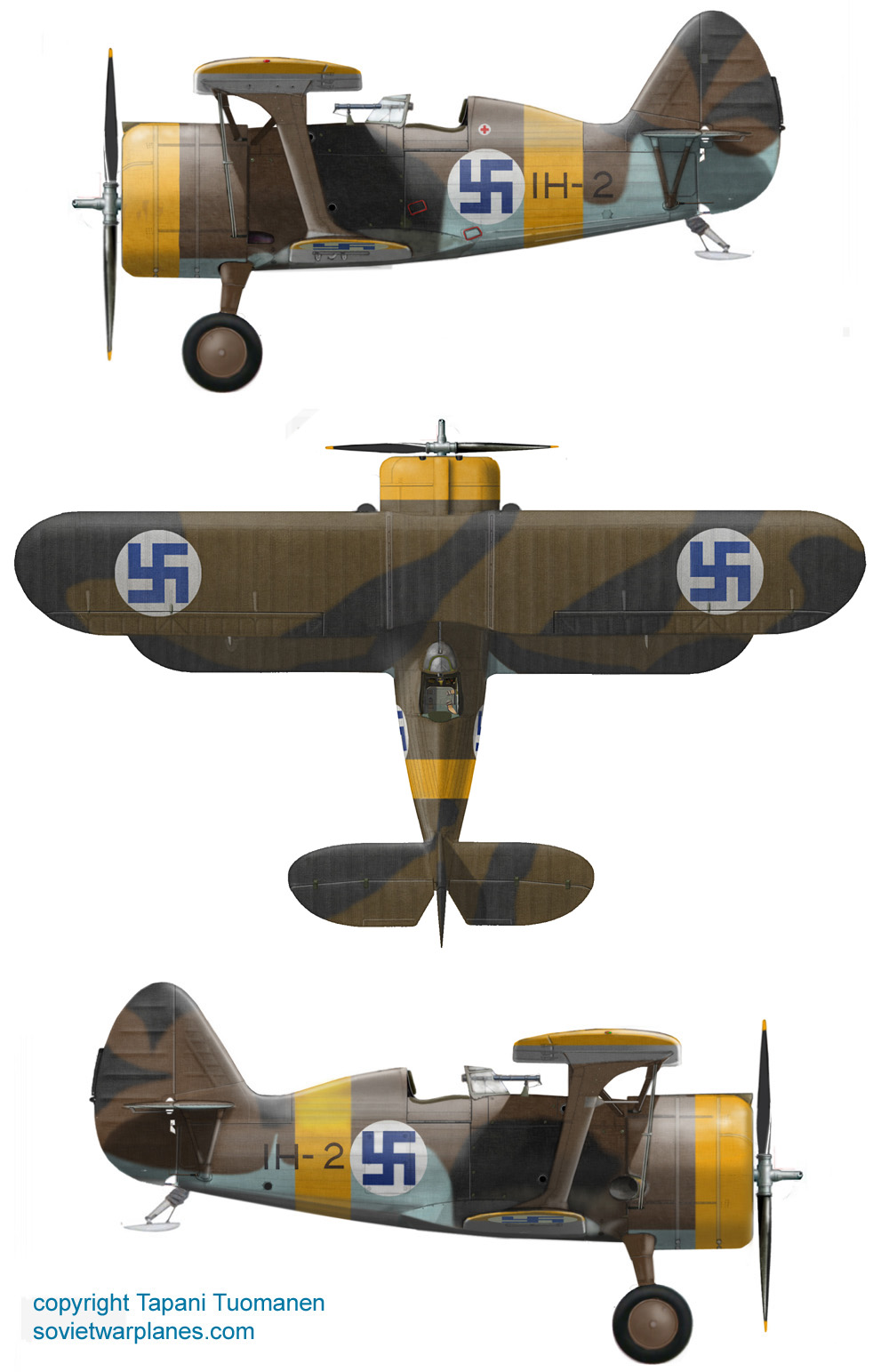
VH-4-->IH-4
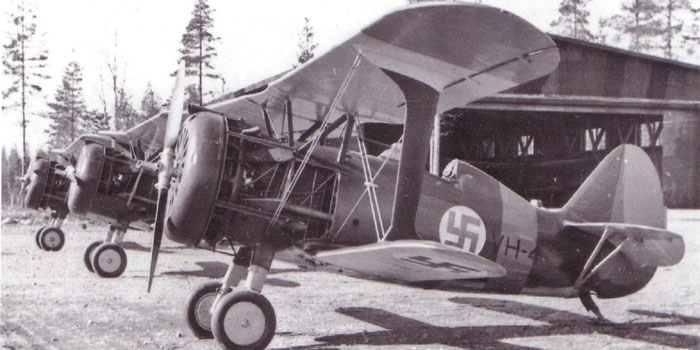
VH-4 was delivered to LeLv 34 on October 11, 1940.
It crashed at Parola on October 17, 1940, then again on June 20, 1941.
It was delivered to 2/TLeLv 35 on February 4, 1942, but it had a further accident when landing in Vesivehmaa.
The plane shows an olive green livery with light grey undersurfaces; the orange-yellow wingtips and the band on the fuselage were added in June 1941, with the start of the Continuation war.
Some repaintings under tha tail could be made with red-brown primer.
Later, yellow bands of 50 cm were added on the nose too.
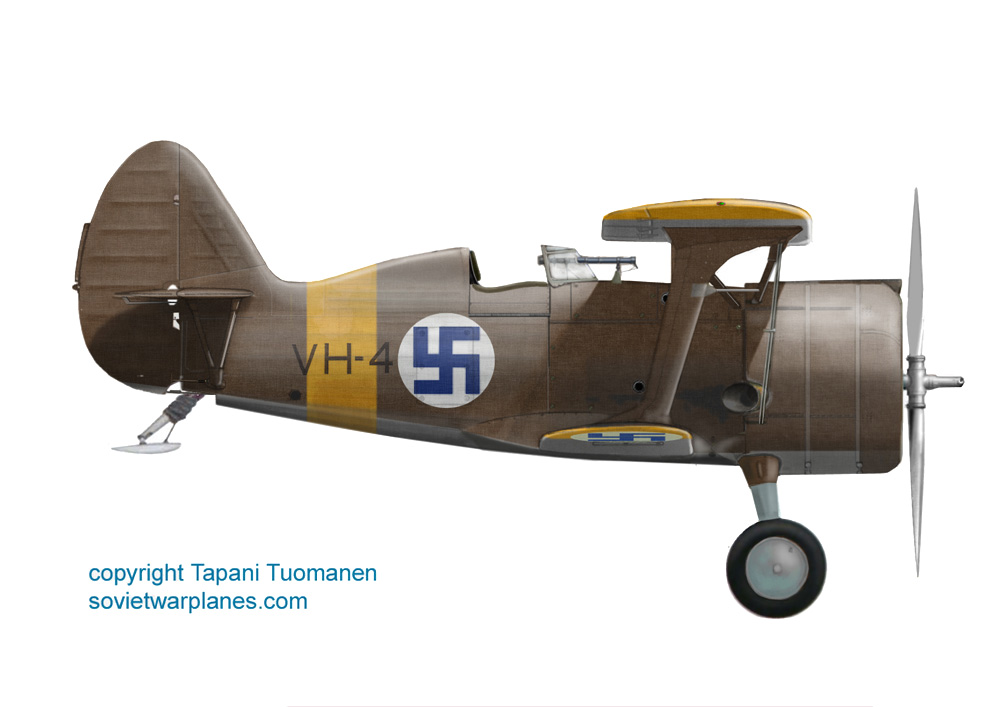
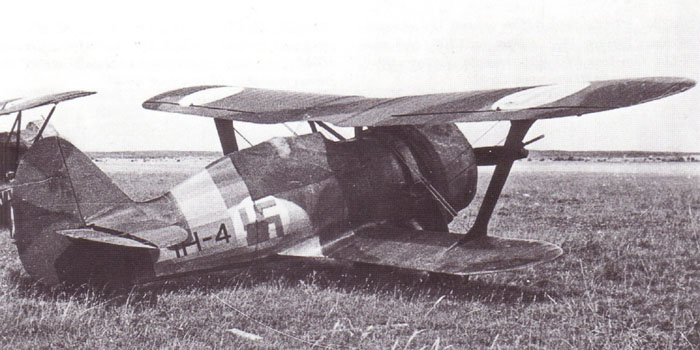
In May 1942, its code was turned into IH-4; the undersurfaces were painted in light blue (as German RLM 65), while the black/olive green on the upper surfaces was presereved.
On 7 August 1943, it was given to LeLv30.
It was given to 2/TLeLv35 on February 4, 1944.
It was stored on March 12, 1945, after 144 h of flying time.
VH-5-->IH-5

VH-5 was assigned to LeLv 34 on February 3, 1941.
It had a landing accident at Turku on June 9, 1941.
It was assigned to 2/TLeLv 35 on December 3, 1941.
In May 1942, its code changed from VH-5 to IH-5.
So, this photo has to be of 1942, but the nose wasn't yet painted yellow, and the plane has preserved the early greenlivery with light grey undersurfaces; we don't know if the plane received the green/black/light blue livery after this date.
It was stores on September 11, 1942, after 106 hours of flight.
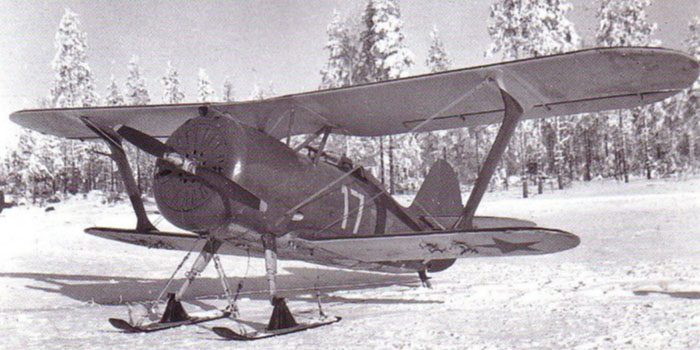
Fake Soviet markings were painted on VH-5 on 21 February 1942 to make a training movie.
As one can see, the resemblance to a factory painted Soviet I-15bis isn't perfect because of the height of the green-grey border, for the painting of the spinner, the position of the number and some other details.
The yellow bands on the plane have been deleted, but they remain somewhat visible under the wings.
Note that the skis are not the original ones of I-15bis.
.
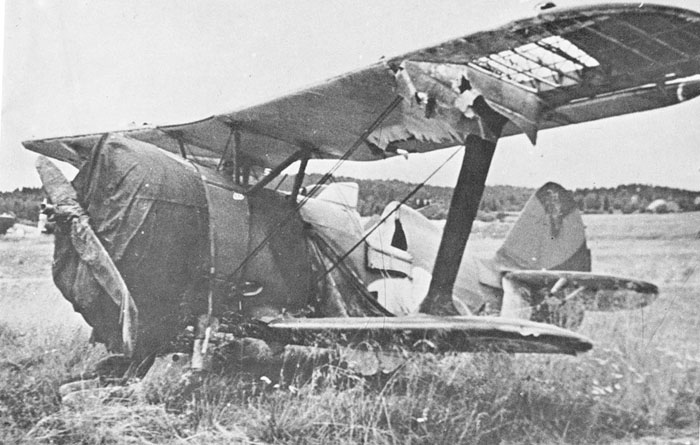
This photo shows a Finnish I-15bis in state of abandonement in a depot after the end of the Second World War.
We can note the absence of yellow bands, deleted in September 1944 after the armistice with Soviets, and the postwar cockade, introduced in April 1945, under the lower wing, but these planes was never were flown with the new markings.